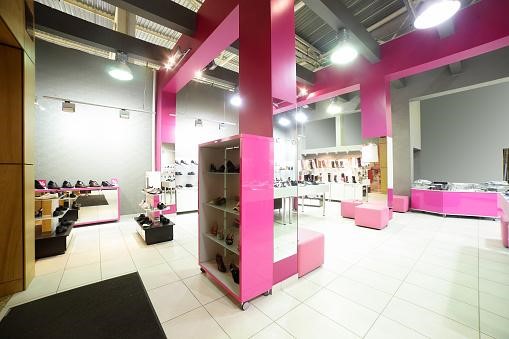Online shopping may be on the rise, but many customers are unwilling to let go of traditional, brick-and-mortar retailers. In fact, only a slim majority of millennials prefer shopping online, with all other age demographics-even Gen Z-preferring to go in-store. This is primarily due to the diligent work of visual merchandisers to create unique, engaging in-store experiences.

Visual merchandisers create and deliver a sensory experience that online retailers cannot hope to match in today’s technological environment. By visiting a retail location, customers can touch products, ask for information, and try out items such as clothes. Just by curating a welcoming, engaging space, visual merchandisers create an irreplaceable experience that online retailers cannot accomplish.
These displays ultimately drive greater sales. It’s well understood that the longer a customer looks at a display, the more likely they are to purchase a product on the display. This results in additional unplanned purchases that cannot be accomplished in the same way online. To learn how to use visual merchandising to increase sales and get a leg up over online competition, read on.
[wbcr_snippet id=”780″]
Place Displays Wisely
Determining the placement of your items and displays is the first step to setting the stage for success. Try to adhere to the “rule of threes,” which is commonly used trick to achieve asymmetry. So as long as the products are related, this asymmetry will create additional visual interest for your primary product, while enabling visual merchandise to cross-sell related products.
It’s also beneficial to use multiple different sizes of display pedestals or acrylic risers. This helps viewers prioritize which items are more deserving of their attention. Visual merchandisers should generally showcase the most important items at eye level, which is about 61 inches. The items that exist as an accent to the most important items should be placed below eye level. While those accent items should belong to them, keep in mind they may not be consciously noticed since a customer will need to look up or down to see them.
Finally, pay attention to movement patterns. If the most common path that a shopper takes through a store is not yet known, work to discover that information before placing merchandising displays. Think of these displays as physical version of Amazon’s “Suggested Products.” As a customer moves into a section, they should see related products that they may like on display. This will make customers discover that they want more items than what they entered the store for.
Use Color and Lighting for Visual Interest
Color is used by visual merchandisers to create visual interest, expanding the amount of time that people spend looking at a display. As previously mentioned, this increases their chance to purchase. When choosing a color scheme, consider these three basic strategies:
Monochromatic– These displays use a single shade of any single basic color. This is often used to communicate simplicity, or to help a product with contrasting shade stand out.
Complementary- This involves using colors that are opposite to each other on the color wheel. For example, using blue and orange, or yellow and purple.
Analogous- This color scheme involves colors that are next to each other on the color wheel. These usually appear in triads, like blue, green, and spring green.
While color is of great importance, do not neglect the importance of lighting. If a product is especially important, consider putting it atop a lighted pedestal, or using overhead lighting like a spotlight to draw attention to it. This will set a mood products that will increase both attention and marketability.
Use Technology
Just because your eCommerce competition relies heavily on technology doesn’t mean brick-and-mortar retailers can’t take a page out of their playbook. Consider using dynamic LCD display that can show off vital information that may not be able to fit in a static display. Or, simply just the power of digital displays to create additional visual interest via movement.
Additionally, try to encourage customers to bring their in-store experience online. One type of retailer that has showcased this with excellence in the past are pop-up shops. For example, the Converse store on Broadway in New York City encouraged customers to photograph a visual display. When a customer used their phone to capture a picture of their shoe display, the image morphed into a skull. As a result of this genuinely impressive visual merchandising experience, customers shared their product online to their entire network of friends. This not only helped with sales in the location, but also helped drive organic interest to the Converse brand.
Final Thoughts
At the end of the day, there’s no real replacement for the unique sensory experience that visual merchandisers give to retail locations. So long as visual merchandisers are able to create displays that improve the in-store experience, brick-and-mortar retailers can relax, knowing they have a unique offering that online retailers cannot offer to their customers.
Ready to discover displays that can help create visual interest for your retailer’s products? Take a look at our retail displays and fixtures category page. Or, if you have questions about customized products contact us today.

